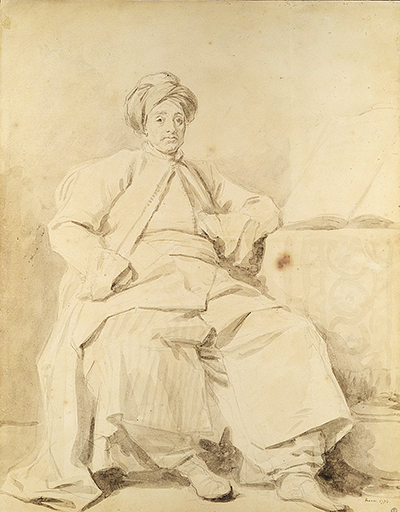Jean-Honore Fragonard honed his natural talent in the studios of Boucher and Chardin, helping him to develop technical skills in a variety of different mediums. Most famous for his oil paintings, he also produced many impressive drawings and etchings across a highly productive career.
The level of completeness found within many of his drawings has ensured that more from his career have been preserved and discovered as compared to other artists of the time. His connection to Boucher has also meant that some of these sketches were intially attributed to his tutor, before these attributions were corrected as more information on Fragonard himself became available. The artist produced many portraits within his career and this genre requires considerable practice in order to be fully mastered, if challenging the true kings of the Renaissance - see examples of Michelangelo's drawings for a better understanding of their own practices. If we browse the drawings that remain from his career, there is a great variety of mediums used as well as the content within them.
The example from his career that you will see in this page was completed using brown wash over chalk, and some artists have actually used this process as a starting point to a complete painting, with the layers of oil to be added afterwards. This piece is part of the collection of the Metropolitan Museum of Art and was intended purely as a study piece. This simplistic combination of mediums provides a stunning insight into the natural abilities of the artist, where most layers are stripped back and we can appreciate the individual strokes made by the artist, be it in chalk or brush. Fragonard would sometimes allow others to see these works in order to study portraiture themselves, just as he had done whilst developing under the guidance of Boucher and Chardin.
The remaining items that have been uncovered from Fragonard's oeuvre within the field of drawing and etching include also a number of landscape scenes. His handling of foliage was masterful, and he re-used these qualities in the backdrops of many of his most famous paintings. This was achieved through hard work and constant practice and in the case of some of these chalk drawings, he would focus entirely on that genre so that more significant projects could be accomplished without too much concern over how he might put together the background elements. It became second nature to him, through the constant practice of sketching overhanging trees, thick bushes and all manner of other natural features that one might come across within an upper class 18th century garden. He never had to become too detailed or knowledgable around plants, as they would just be secondary elements to his main paintings, but he wanted to be confident in portraying elements that we are all aware of so that they appeared realistic across the detailed Rococo paintings which dominate his oeuvre.
The Metropolitan Museum of Art has quite a collection of drawings from this artist's career and this is beneficial in drawing conclusions on artwork which remains in one single location, rather attempting to piece together conclusions around all manner of random artifacts that reside in a variety of private and public collections all across the western world. Much of that institutions examples were produced in chalk, and the reproduction images of some of these are good enough to look deeper into his style as a draughtsman. Sadly, very few of the famous painters from the 18th century have had their drawings examined by academics in any great detail and so we are left with having to do the investigative work ourselves for the timebeing. With a greater focus coming onto his career in recent generations, perhaps this void will be satisfactorily filled in future years.




